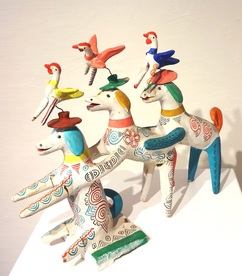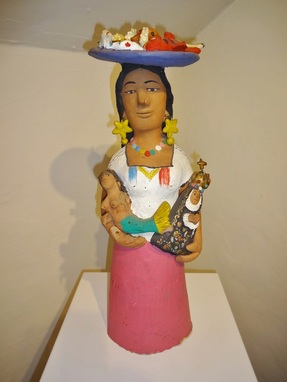- Home
-
Permanent Exhibition
- Bandera Ware
- Bandera Ware
- Spotlight Gallery >
-
Past Exhibitions
>
- Past Exhibitions >
- Native Mexican Garment
- The Joy of Nativity Scenes
- Our Day of the Dead Altar
- Women of Mexican Independence (1810)
- Divine Pitchers/ Jarras Divinas
- Cinco de Mayo display
- Legends of Mexican Cinema photos
- Navidad Mexicana
- Day of the Dead Altar 2021
- Independence Day Display 2021
- Splendors of "The Tree of Life"
- Mexican Independence Day
- Navidad 2020
- Old Postcards from México
- La Catrina from its origins
- OTOMÍ DREAM
- NATIVITY SCENES 2019
- Three Wise Man Celebration
- DAY OF THE DEAD 2019
- Whimsical Tales of Ocumicho
- Mexican Independence Day display 2019
- Lacquers from Uruapan
- Mariachi outfit and its history
- The Popular Mexican Velvet Hat
- Cinco de Mayo -2019
- Green-Glazed Ceramics
- Double Exhibition
- Chistmas Nativities-2018
- Day of the Dead / El Día de Los Muertos 2018
- Patriotic Play: Figures of the Mexican Revolution
- Mexican Independence Day 2018
- Fiesta Display: Traditional Mexican Embroidery
- Traditional Toys
- Cinco de Mayo 2018
- Splendors of Oaxacan Art
- Nacimiento Navideño 2017
- Día De Los Muertos 2017
- Birds of Clay: Burnished Pottery from Jalisco
- ¡Alebrijes! Alebrijes!
- Mystical Masks / Máscaras Místicas
- Nacimiento Navideño/ Nativity Sets & Scenes 2016
- El Día De Los Muertos 2016
- Muñecas Tradicionales / Traditional Dolls
- Barro Petatillo y Petate de Palma
- Dîa de los Muertos 2015
- Bandera Ware/ Flag Ware
- Past Events
- Saintly and Spirited: Art Made of Tin
- ¡LOTERÍA! Mexico's Game of Chance and Poetry
- Tree of Life / El Arbol de la Vida
- Mexico Dreams Animals
- A Photographic Stroll
- Transportation ¡DALE!
- ¡Buen Provecho! Dining in Mexico
- Get Involved
- Links
- Collections
- Upcoming exhibition
The Museum's
LA TEHUANA
La Tehuana
In the state of Oaxaca, the women of the Isthmus of Tehuantepec have long enjoyed fame for their ‘exotic’ beauty and richly colored textiles. The word tehuana has come to be used interchangeably, referring to a woman from the geographic region of Tehuantepec as well as to her distinguishing dress. A combination of styles, the dress is an evolving testament to the diverse peoples that have passed through the Isthmus for centuries: cotton muslin from England used originally for its sturdy yet fine quality, floral patterns from Asia, the squared shape of the pre-Hispanic huipil (blouse), and the lace petticoats from Europe, all manifesting into the unique tehuana dress seen today. |
La Tehuana
En el estado de Oaxaca, las mujeres del Istmo de Tehuantepec son famosas por su belleza ‘exótica’ y textiles de colores vivas. La palabra tehuana significa ambos, refiere a la mujer de la región geográfica de Tehuantepec, y a la vez, a su vestido distinguido. Su traje es una combinación de estilos y evidencia de la diversidad de gente quienes han pasado por el Istmo dejando su marca: el algodón inglés utilizado por su fuerza refinado, los diseños florales asiáticos, la forma cuadrado del huipil pre-hispánico, y la enagua de encaje de origines europeos, todos manifiestan en un traje único que se encuentra hoy en día. |
Work by Artist and Potter:
JERÓN MARTINEZ MENDOZA
Jerón Martinez Mendoza
|
Jerón Martinez Mendoza
|
Beaded Jaguar Head by Huichol Artist (Anonymous)
|
Copyright © 2018 Casa Dolores - All rights reserved.
|
- Home
-
Permanent Exhibition
- Bandera Ware
- Bandera Ware
- Spotlight Gallery >
-
Past Exhibitions
>
- Past Exhibitions >
- Native Mexican Garment
- The Joy of Nativity Scenes
- Our Day of the Dead Altar
- Women of Mexican Independence (1810)
- Divine Pitchers/ Jarras Divinas
- Cinco de Mayo display
- Legends of Mexican Cinema photos
- Navidad Mexicana
- Day of the Dead Altar 2021
- Independence Day Display 2021
- Splendors of "The Tree of Life"
- Mexican Independence Day
- Navidad 2020
- Old Postcards from México
- La Catrina from its origins
- OTOMÍ DREAM
- NATIVITY SCENES 2019
- Three Wise Man Celebration
- DAY OF THE DEAD 2019
- Whimsical Tales of Ocumicho
- Mexican Independence Day display 2019
- Lacquers from Uruapan
- Mariachi outfit and its history
- The Popular Mexican Velvet Hat
- Cinco de Mayo -2019
- Green-Glazed Ceramics
- Double Exhibition
- Chistmas Nativities-2018
- Day of the Dead / El Día de Los Muertos 2018
- Patriotic Play: Figures of the Mexican Revolution
- Mexican Independence Day 2018
- Fiesta Display: Traditional Mexican Embroidery
- Traditional Toys
- Cinco de Mayo 2018
- Splendors of Oaxacan Art
- Nacimiento Navideño 2017
- Día De Los Muertos 2017
- Birds of Clay: Burnished Pottery from Jalisco
- ¡Alebrijes! Alebrijes!
- Mystical Masks / Máscaras Místicas
- Nacimiento Navideño/ Nativity Sets & Scenes 2016
- El Día De Los Muertos 2016
- Muñecas Tradicionales / Traditional Dolls
- Barro Petatillo y Petate de Palma
- Dîa de los Muertos 2015
- Bandera Ware/ Flag Ware
- Past Events
- Saintly and Spirited: Art Made of Tin
- ¡LOTERÍA! Mexico's Game of Chance and Poetry
- Tree of Life / El Arbol de la Vida
- Mexico Dreams Animals
- A Photographic Stroll
- Transportation ¡DALE!
- ¡Buen Provecho! Dining in Mexico
- Get Involved
- Links
- Collections
- Upcoming exhibition



